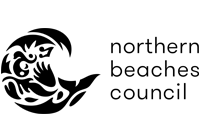Pittwater Council area
About the profile areas
The 2023 Estimated Resident Population for Pittwater Council area is 64,006, with a population density of 708.3 persons per square km.
Location and boundaries
The former Pittwater Council area is located on Sydney's northern beaches - about 26 kilometres from the Sydney CBD. The former Pittwater Council area is bounded by Broken Bay in the north, the Tasman Sea in the east, Narrabeen Lagoon and Deep Creek in the south, and the former Warringah Council area in the south-west and west.
Traditional Owners
The original inhabitants of the former Pittwater Council area were the Aboriginal people now known collectively as the Guringai.
Name origin
The former Pittwater Council area derives its name from the body of water so named by Captain Arthur Phillip in 1788. This includes the eastern reaches of the Hawkesbury River and Broken Bay. It was named after William Pitt, the Younger, Prime Minister of Britain in the late 18th and early 19th century.
Important
|
Population64,006 2023 ABS ERP |
Land area90.36 square km |
Population density708.3 persons per square km |
Settlement history
The area was explored in 1788 by Captain Arthur Phillip. European settlement in the former Pittwater Council area dates from 1796, after Governor Hunter surveyed Broken Bay. Development was slow, due largely to the area being relatively isolated and access being only by ship. Land grants occurred from 1810, with land used mainly for timber-getting and farming. Some growth occurred in the 1880s, spurred by improved access. Land continued to be used mainly for farming, grazing and orcharding, with some fishing, boat building and timber-cutting industries. The former Pittwater Council area became a popular holiday destination, with many guesthouses and holiday homes built in the early 1900s and the interwar period. Significant residential development occurred from the 1950s, aided by the construction of bridges and roads. Much growth took place in the 1960s and 1970s. The population increased slightly from the early 1990s, rising from under 50,000 in 1991 to nearly 56,000 in 2011.
Land use
The former Pittwater Council area is mainly residential and national park, with some commercial and light industrial areas. The former Pittwater Council area encompasses a total land area of 125 square kilometres, of which nearly half is national park, bushland or reserves, including coastal foreshores, beaches, islands and waterways. Non-residential areas are mainly in the north and north-west.
Major features
- Major features of the former Pittwater Council area include Ku-ring-gai Chase National Park,
- Pittwater (including Broken Bay and the Hawkesbury River),
- Narrabeen Lagoon,
- Scotland Island,
- Barrenjoey Head Aquatic Reserve,
- several beaches,
- Mona Vale Hospital,
- Warriewood Square Shopping Centre,
- The Mona Vale Town Centre,
- Pittwater Place Shopping Centre,
- Bungan Castle,
- Coastal Environment Centre,
- The Bible Garden,
- Barrenjoey Lighthouse,
- Bicentennial Coastal Walkway and various lookouts,
- marinas,
- wharves and rockpools.
Included areas
- The former Pittwater Council area includes the suburbs and localities of Avalon Beach,
- Bayview,
- Bilgola Beach,
- Bilgola Plateau,
- Church Point,
- Clareville,
- Coasters Retreat,
- Currawong Beach,
- Elanora Heights,
- Elvina Bay,
- Great Mackerel Beach,
- Ingleside (part),
- Ku-ring-gai Chase (part),
- Lovett Bay,
- McCarrs Creek,
- Mona Vale,
- Morning Bay,
- Newport,
- North Narrabeen,
- Palm Beach,
- Pittwater,
- Scotland Island,
- Warriewood and Whale Beach.
